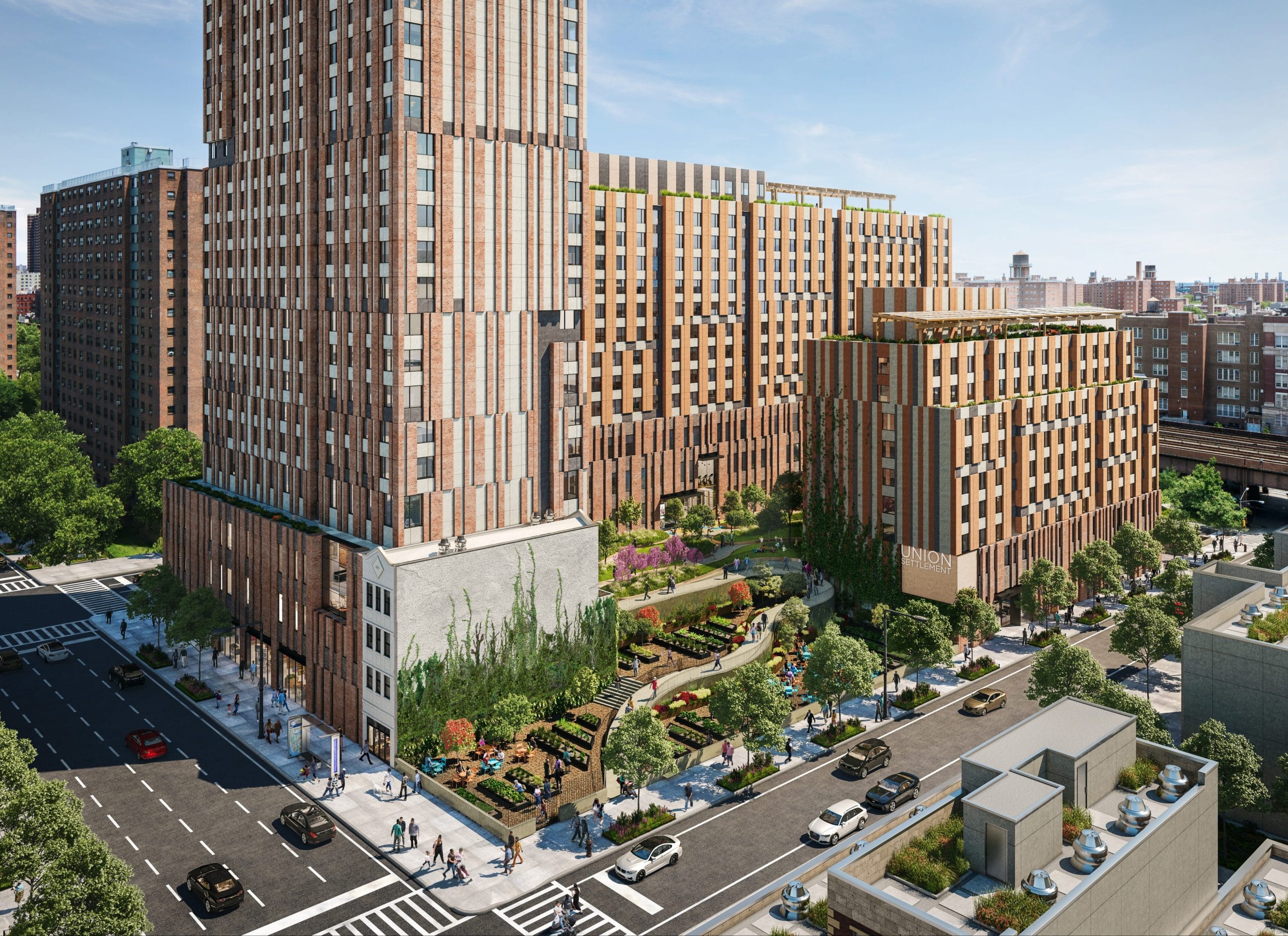Sendero Verde
East Harlem, NY
Largescale affordable housing development in East Harlem certified by the Passive House Institute and Enterprise Green Communities

In 2016, NYC’s Department of Housing Preservation solicited proposals for the redevelopment of a full city block located in East Harlem that was occupied by a baseball field and GreenThumb community gardens. Proposals were requested to address the design, construction, and management of a mixed-income and mixed-use affordable housing development with an emphasis on sustainability.
The project was awarded to a team of renowned NYC-based developers and architects who proposed that the winning project be dubbed Sendero Verde. The high-performance, sustainable development was constructed in three phases and brought over 700 affordable apartments to the East Harlem community.
The team was driven to make the project a beacon of success for large-scale, multifamily Passive House development in the United States and around the world.
Project Team
- Developers & Owners: Jonathan Rose Companies, L+M Development, Acacia Network
- Architect: Handel Architects, LLP
Building Details
- 455,000 SF
- 3 buildings, ranging from 10 to 38 stories
- 709 units total
SWA Services
- Certification Support
- Commissioning
- NYCECC Inspections
- NYSERDA NCP Program Participation and Incentive Support
- Passive House Design and Field Verification
Certifications

Enterprise Green Communities

Passive House Institute (PHI)
Features
Primary Energy Conservation Measures
- A highly insulated and air-tight facade, including thermally broken shelf angles at all brick veneer locations and an exterior insulated finish system (EIFS) on two of the three buildings
- Superior triple pane window assemblies consisting of thermally broken metal frames for the tower and highly insulative uPVC windows for two of the three buildings
- Highly efficient, centralized energy recovery ventilation system
- Variable refrigerant flow (VRF) heating and cooling system
- Optimized hot water recirculation strategy to reduce domestic water heating energy and cooling loads
Video Tour
Video courtesy of the American Institute of Architects, New York Chapter (AIANY)
Press Coverage
East Harlem ‘Passive House’ Apartment Complex is the Nation’s Biggest Ultra-Green Development Yet
The City
Developers say Sendero Verde uses about half the energy of a comparable non-passive building thanks to insulation, sealing to prevent leakage, thick windows and ventilation. The result: clean air, quiet interiors, and stable temperatures — even if the power goes out. Spurred by both government incentives and mandates to build greener, such projects offer comfortable, healthy environments to residents often most vulnerable to the effects of a warming planet.
Press Coverage
East Harlem’s Sendero Verde Sets sustainability Standard for Affordable Housing
CBS New York
